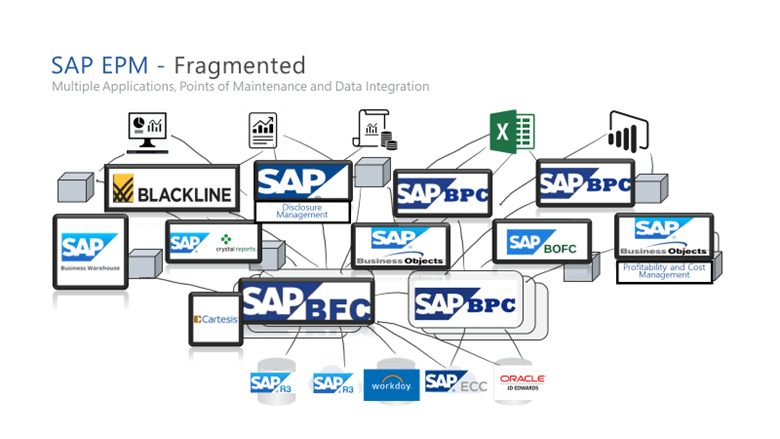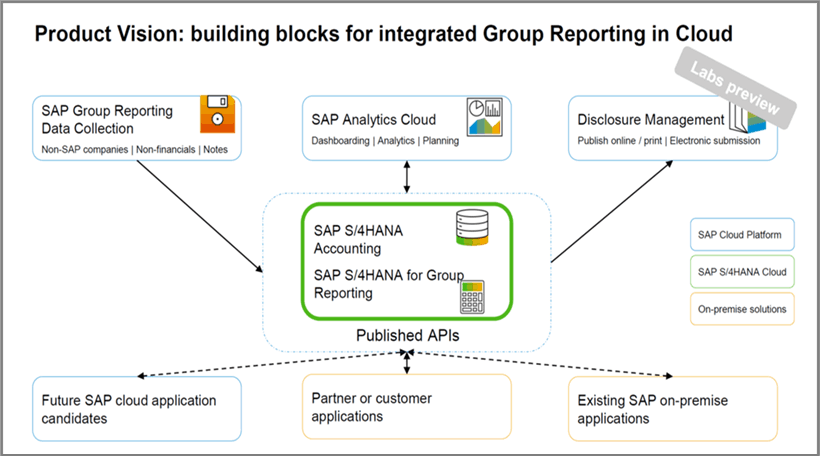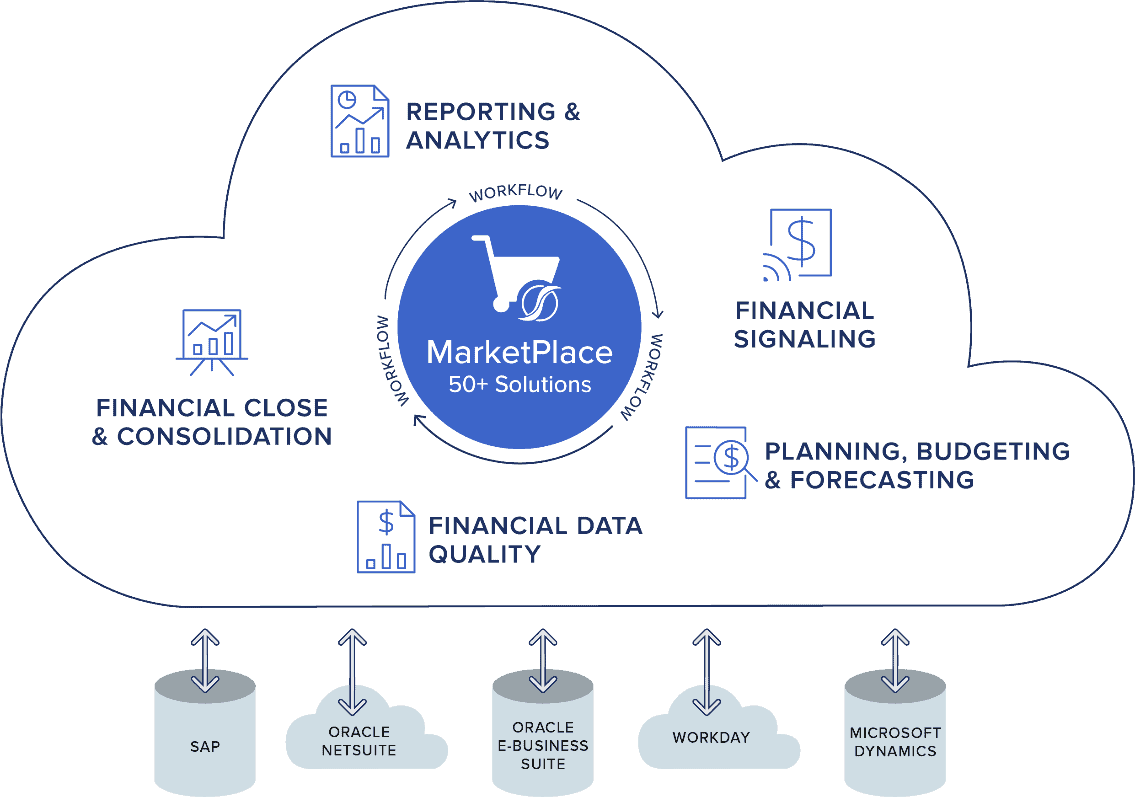Over my 20+ year career within the corporate performance management (CPM) industry, I’ve talked to hundreds of SAP customers about their Finance Transformations. And most Finance users reported facing a pretty common challenge: How can Finance leaders drive performance if they’re consumed with the complexities of managing multiple applications in the SAP enterprise performance management (EPM) ecosystem?
Here’s my take. Fragmented EPM solutions add risk, cost and complexity to financial processes (e.g., financial consolidation, planning, analytics and financial data quality). And if the purpose of Finance Transformation is to help organizations modernize and simplify processes, technology should reduce risk, not add more. In fact, I often suggest Finance leaders start their evaluations by asking a simple question – how can your organization take steps to reduce complexity?
For Finance teams with SAP EPM products, there’s no better time than now to take control of your own destiny. Why? Because with products like Business Planning and Consolidation (SAP BPC) coming off support, [1] SAP is creating a new “suite” of EPM products for the financial close, planning and analytics.
And just to make it “less complex,” SAP’s new strategy is built almost entirely around your organization completing a multi-year, multi-million dollar investment in their S/4 HANA Finance system.
Easy, right? Don’t worry – if you’re like me, it might take you a few “swings” to pick up all the SAP lingo. That’s why we’ve designed this two-part blog series, “Demystifying S/4 HANA and EPM for Finance Transformation” to boil it all down to the brass tacks.
Our first post focuses on Finance teams with SAP EPM products who are wondering, “What’s next?”
Three Choices for SAP EPM Customers
SAP’s strategy sounds simple. But in reality? Well, it’s anything but.
SAP wants to move over 20K+ ERP customers to S/4 HANA. Why does this matter? For large, complex organizations, this “migration” typically costs several million dollars and could take several years to implement. For Finance leaders who are in the trenches every day, this means your so-called transformation is still years away.
Yep, years. And we haven’t even started talking about EPM processes such as planning, reporting or the financial close yet.
If your organization uses SAP for EPM, you have three choices to consider:
- Choice 1: Continue with legacy SAP EPM products until their end of cycle.
- Choice 2: Invest into SAP’s unproven next-generation products, such as Group Reporting, Analytics Cloud and maybe Central Finance, or some variant hybrid strategy. (Note that this strategy requires at least one S/4 HANA Finance instance to support Group Reporting).
- Choice 3: Take control of your Finance Transformation by evaluating alternate EPM strategies.
Now let’s dive into what each choice would ultimately mean for you and the Finance function in your organization.
Choice 1: Continue with SAP Legacy EPM Products
Right now, SAP’s most popular EPM product is BPC, which is reaching it’s end of cycle for support. If your organization is also running legacy SAP ERP, that creates a pretty big problem. BPC’s end-of-cycle support date ranges anywhere from three to eight years BEFORE the end-of-support date for the SAP ERP systems that BPC works with (see Figure 1). Why does this matter?

Figure 1: SAP BPC End of Cycle Support
The red-shaded area in Figure 1 is a flashing warning sign.
The gaps in support mean, to keep your EPM tools, you’d be adding risk at a time when Finance leaders are innovating to keep pace with rapid changes, become agile and enable the organization to drive performance. And if your Finance team is stuck navigating and reconciling data from fragmented EPM tools (see Figure 2) – and doing it without support – your ability to innovate is pretty limited.

Figure 2: SAP’s Legacy EPM Solutions
Unless, of course, your organization is ready to embark on a multi-year journey to SAP S/4 HANA and new EPM products.
Choice 2: Betting on S/4 HANA and Next Generation EPM
So what’s SAP’s vision for customers yearning for Finance Transformation? SAP is guiding customers toward yet another combination of products (see Figure 3) that comprises SAP Analytics Cloud (SAC) for planning and budgeting, Group Reporting for consolidations and S/4 HANA (required for Group Reporting). Oh and maybe another product, Central Finance, if organizations choose to keep non S/4 ERPs in the mix, regardless of whether they’re legacy SAP products or ERPs from another vendor.
Sounds complicated, right? Not to mention time-consuming, resource-intensive and expensive.

Figure 3: SAP Next Generation EPM
For organizations evaluating this option, here are a few items to consider as part of your due diligence:
- Complexity – Each product requires its own resources, skillsets and coordination between respective implementations. For example, since Group Reporting is the book of record for financial consolidation, all statutory and management reporting must be defined several months or even years in advance.
- Change Management – This strategy is a multi-year “rip and replace” strategy. Most organizations that follow this path engage a systems integrator with a deep background in managing multi-year transformations with heavy emphasis on overseeing change management between Finance, Operations, Supply Chain and other key functions.
- Time – Because S/4 HANA is typically implemented first, Finance teams may need to wait two to three years before reaping the benefits from EPM transformation. Does your organization have this kind of time to spare?
- Investment – Large, complex organizations are looking at a multi-million dollar investment, including at least $1M for software and another few million dollars for services. Organizations should also consider the direct and indirect costs of redirecting internal resources to the new project and away from their current roles.
If you believe SAP’s product strategy is creating unnecessary risk for your Finance team, don’t let SAP convince you that it offers the only path forward. They don’t.
Choice 3: Increase Time to Value and Lower TCO with an Intelligent Finance Platform
For organizations focusing on driving more immediate performance and enterprise value through EPM, (a.k.a. CPM), intelligent finance platforms (see Figure 4) like OneStream offer a great option. And with over 130 SAP ERP customers choosing OneStream, many of them replacing SAP BPC, BFC and other legacy products, more and more Finance teams around the globe are taking control of their Financial Transformation with OneStream. Why?

Figure 4: OneStream’s Intelligent Finance Platform
As Figure 4 illustrates, OneStream is completely agnostic to ERP strategy. Why does this matter? Well, it’s simple: Unlike SAP’s strategy, OneStream doesn’t require S/4 HANA (though works with) and therefore offer a much faster time to value than SAP’s long-term strategy. Rather than relying on a central ERP strategy, OneStream integrates data from multiple sources –such as ERP, CRM, HCM and data warehouses – to create a single and governed version of the truth.
Here are a just a few additional capabilities:
- Unified Platform that unifies actuals, plans and reporting & analytics for real-time variance analysis without moving data through multiple point-solutions – all within a single solution.
- Built-in financial data quality, empowering users to seamlessly drill all the way back into source systems to support faster analytics and reporting needs.
- Ability to conquer complexity by eliminating risky integrations, validations and reconciliations between multiple products, applications and modules.
- Built-in advanced financial consolidation and reporting for US GAAP, IFRS, Multi-GAAP and local statutory, foreign exchange and intercompany accounting requirements.
- Integrated business planning that supports Operations, Sales, HR and Finance while still maintaining the financial intelligence to align plan data with actuals at the group level.
- Support for future growth and increased business complexity without new software through a marketplace of solutions, such as Account Reconciliations, Transaction Matching, People Planning and Capital Planning.
Learn More
Click here to learn more about how organizations like yours are taking control of their Finance Transformation journey. And stay tuned for our next post in our Demystifying S/4 HANA and SAP EPM blog series coming soon!
[1] SAP BPC version for NetWeaver 10.1 will continue until end of 2027, aligned with SAP BW 7.5. SAP BPC, add-on for SAP S/4HANA, will continue until end of 2027, aligned with SAP BPC, version for NetWeaver. SAP BPC, version for SAP BW/4HANA will continue until end of 2027, aligned with SAP BPC, version for NetWeaver. Maintenance for SAP BPC 11.1 for BW/4HANA remains unchanged and will end in 2024. The maintenance of SAP BPC, version for Microsoft 10.1 will continue until end of 2024.
Get Started With a Personal Demo


